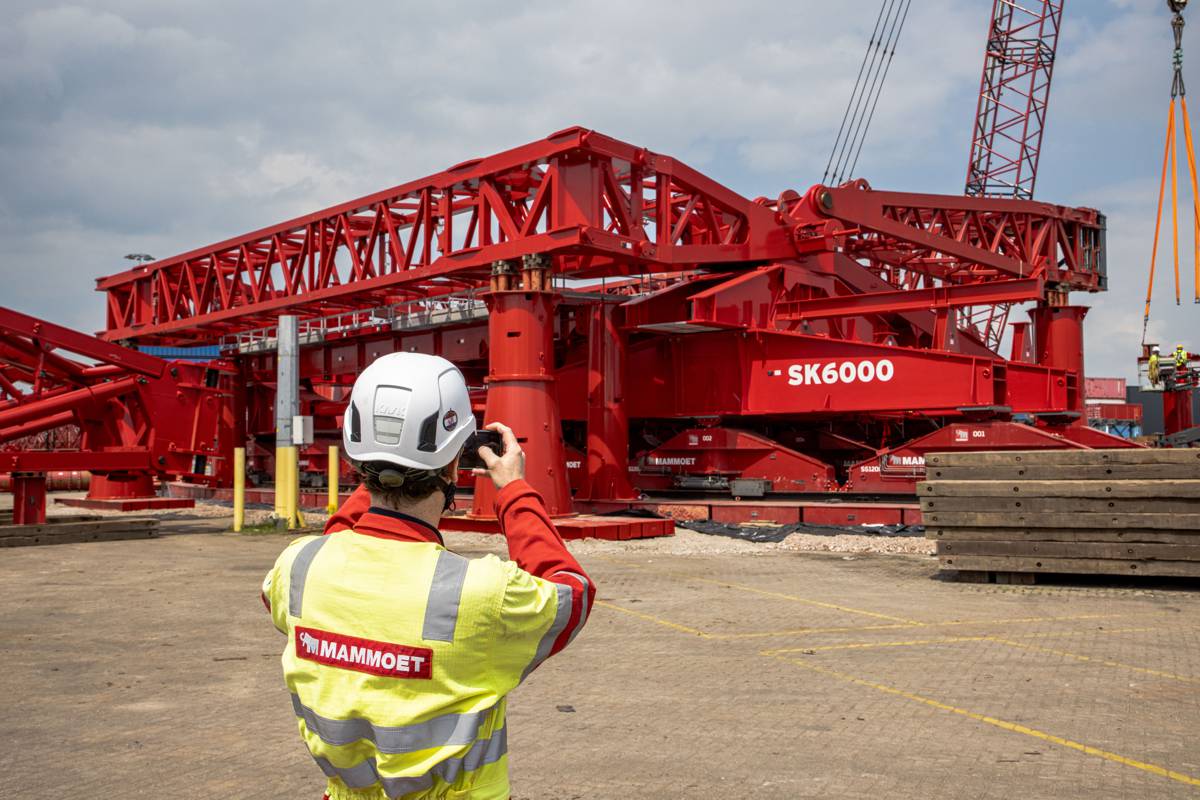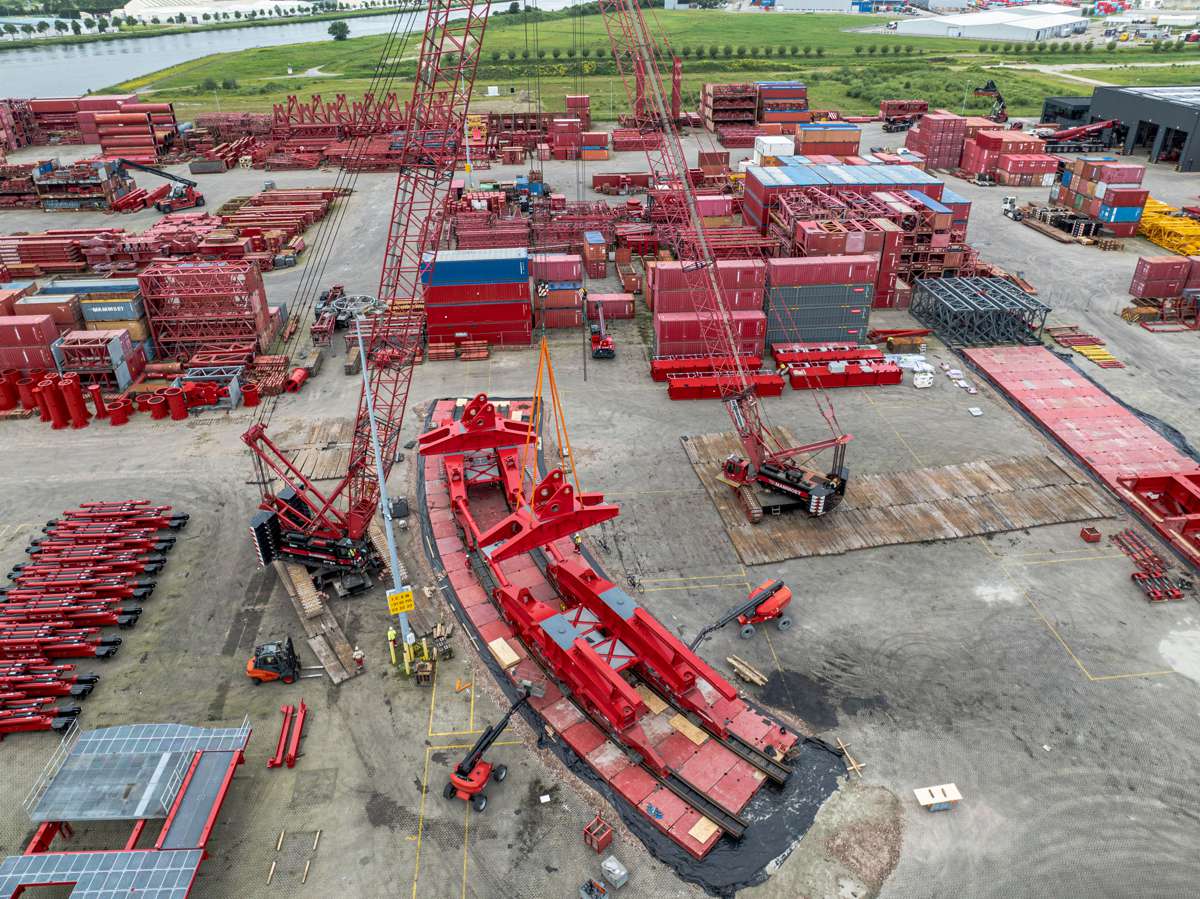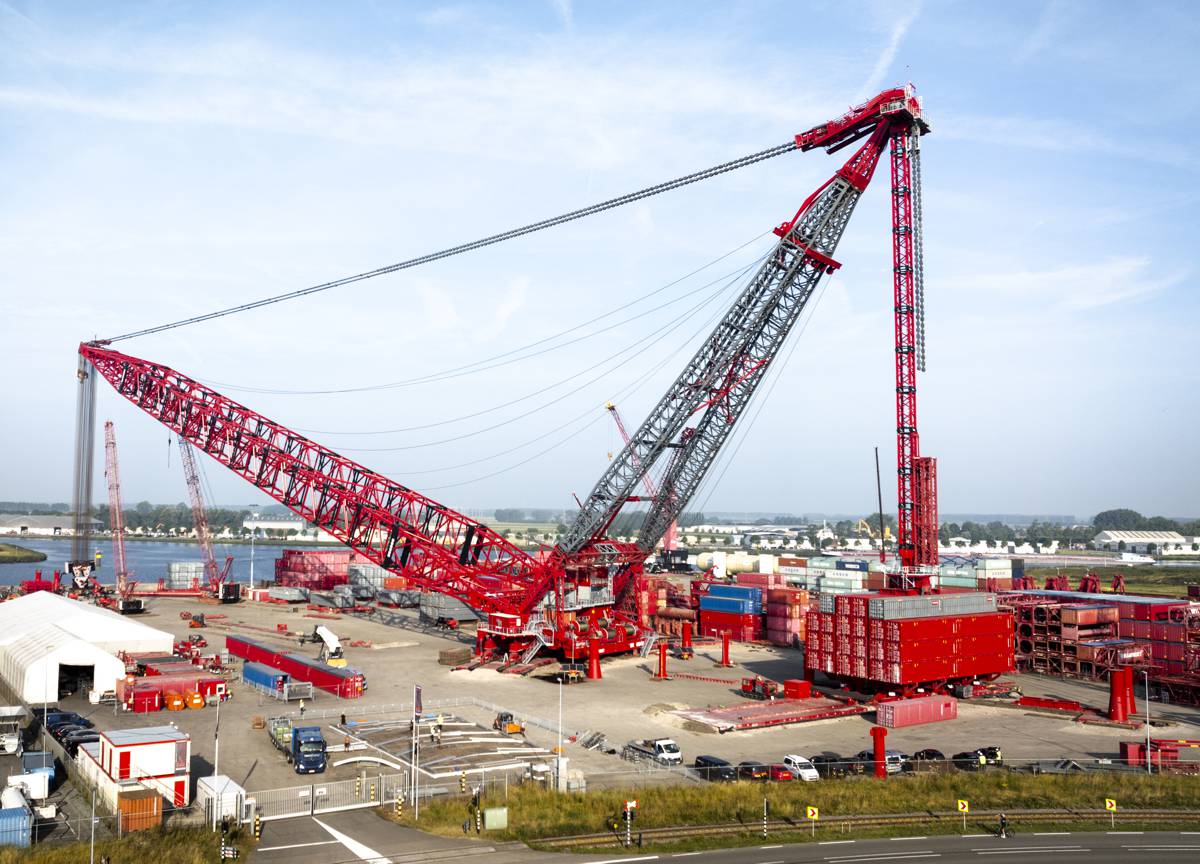Mammoth Crane Revolutionises Heavy Lifting in Energy and Infrastructure
Mammoet, the world’s largest engineered heavy lifting and transport company, has raised the bar once again with the launch of the SK6000—the world’s most powerful land-based crane.
With a staggering lifting capacity of 6,000 tonnes, this behemoth is set to revolutionise construction across the energy and infrastructure sectors, paving the way for faster, more efficient, and cost-effective builds.
As global demand for energy and infrastructure skyrockets, driven by rapid population growth and the urgent need for sustainable power solutions, the SK6000 offers a game-changing advantage. This crane is not just a feat of engineering but a strategic asset designed to streamline complex projects by enabling the construction of larger modules and components offsite, reducing assembly times, and slashing project costs.
Transforming the Offshore Wind Industry
One of the key beneficiaries of the SK6000’s unparalleled capabilities is the rapidly expanding offshore wind sector. With components like turbines and blades growing larger each year, supply chain bottlenecks have become a significant challenge. The SK6000 addresses this issue head-on, lifting up to 3,000 tonnes to an impressive height of 220 metres—enabling the safe and timely assembly of even the most ambitious wind farms.
By allowing projects to build bigger components in parallel rather than sequentially, the SK6000 accelerates timelines, helping projects reach first power faster and reducing the overall costs. For wind farms currently in the planning stages, this means a new level of flexibility and reliability that wasn’t previously possible.
Gavin Kerr, Director of Global Services at Mammoet, notes: “The SK6000 is truly a world record feat of engineering, with a production schedule to match. Hundreds of colleagues have been directly involved with its development across the business. There are very few companies on Earth—if any—that could have brought this crane into reality, and we are immensely proud to be able to do so.”

Boosting Efficiency in Oil and Gas
Beyond renewables, the SK6000’s impact on the oil and gas industry is set to be profound. Offshore floating projects, traditionally plagued by extended integration times and complex logistics, can now be streamlined thanks to this crane’s unmatched lifting power. Onshore projects, including new builds and expansions, also stand to benefit as the SK6000 enables the use of larger pre-assembled modules, reducing on-site construction time and increasing plant uptime.
Modular construction, already a game-changer in the industry, receives a further boost with the SK6000. Critical components can be built offsite, transported, and lifted into place with unprecedented speed and precision. This not only minimises disruptions to ongoing operations but also allows for tighter project schedules and reduced costs.
A New Era for Nuclear Power
As the global community pushes towards net-zero emissions, nuclear power is experiencing a renaissance, with numerous new-build projects receiving the green light. Here too, the SK6000 is poised to play a pivotal role. By facilitating modular construction techniques proven in other sectors, it helps nuclear projects reach completion faster, bringing much-needed low-carbon energy to communities sooner.
The crane’s ability to lift massive components with pinpoint accuracy ensures that even the most complex nuclear builds can proceed with minimal delays. This is particularly important in a sector where safety and efficiency are paramount, and the cost of delays can run into millions.

Designed for Flexibility and Sustainability
Mammoet’s SK6000 isn’t just about raw power—it’s also designed with sustainability and global deployment in mind. The crane’s modular design leverages containerisation techniques, allowing it to be shipped to any location worldwide using standard shipping containers. This makes the SK6000 not only one of the most powerful but also one of the most versatile cranes ever built.
Moreover, the SK6000 is equipped with full electric power capability, running either on batteries or supplied directly from the grid. This feature significantly reduces the carbon footprint of projects, aligning with industry-wide goals to minimise environmental impact during construction.
A Global Collaboration and Engineering Triumph
The journey from concept to reality for the SK6000 has been a global endeavour, involving hundreds of engineers, designers, and specialists across Mammoet’s vast international network. It’s currently undergoing rigorous testing at Mammoet’s Westdorpe facility in the Netherlands, with its first deployment set for later this year.
Mammoet’s commitment to pushing the boundaries of what’s possible in heavy lifting is evident in the SK6000’s development. The company’s deep-rooted expertise, advanced technology, and relentless focus on safety standards have culminated in a crane that not only meets but exceeds the demands of today’s most challenging projects.

Building Smarter, Safer, Stronger
Mammoet’s ethos of “Smarter, Safer, Stronger” is embodied in the SK6000. This crane isn’t just a tool; it’s a strategic advantage that offers clients innovative solutions to some of the most complex lifting and transport challenges on the planet. By understanding client needs and fostering long-term partnerships, Mammoet consistently delivers efficient, cost-effective approaches that turn ambitious plans into reality.
With the SK6000, clients across industries can achieve feats that were once considered impossible. From breaking records to redefining the construction landscape, Mammoet continues to prove why it is a leader in the field of engineered heavy lifting.
A Giant Leap Forward
The launch of the SK6000 marks a significant milestone not just for Mammoet but for the entire construction and energy sectors. As industries evolve and projects grow in scale and complexity, the need for powerful, versatile, and sustainable solutions becomes ever more critical.
The SK6000 is more than just the world’s strongest crane; it’s a bold step into the future of construction, enabling projects to be completed faster, safer, and greener than ever before.




















